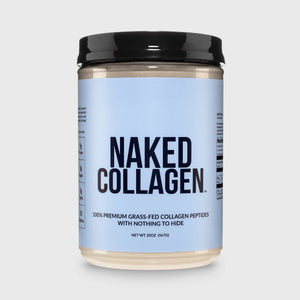Creatine is one of the most researched and widely used supplements in the fitness and health world – providing benefits for athletic performance, brain health, cardiovascular support, and even mental health.
But while creatine has an excellent safety profile, questions remain: Can you take too much? What are the side effects of high doses? Are there certain groups who should avoid creatine or monitor their intake more closely?
In this article, we’ll explore how creatine works, how much you actually need, the potential consequences of excessive dosing, and best practices for safe, effective use.
⚠️ This article is for informational purposes only and does not constitute medical advice. Always consult your healthcare provider before starting any new supplement, especially at high doses.
What is Creatine?

Creatine is a naturally occurring compound made from three amino acids: arginine, glycine, and methionine. It’s produced in the liver, kidneys, and pancreas, and stored primarily in skeletal muscle, where it plays a vital role in energy production.
You can think of creatine as your body’s backup energy system. When you’re doing something intense (like a sprint, heavy lift, or jumping movement) your body taps into this stored creatine to keep you going.
Supplementing with creatine allows you to build up those energy reserves, helping you perform better and recover faster.
How Creatine Works in the Body
Inside your muscles, creatine is stored mostly as a form known as phosphocreatine.
During high-intensity effort, phosphocreatine helps your body recycle ATP, your main energy molecule. This allows you to squeeze out a few more reps, sprint a little longer, or push a bit harder in your workouts.
You get some creatine from your diet, mostly from meat and fish. But unless you eat large amounts of those foods daily, you’re probably keeping your creatine stores as high as they could be.
That’s where creatine supplements come in. The most common and trusted form is creatine monohydrate. Other versions like creatine HCl or buffered creatine exist, but research hasn’t shown them to be more effective.

How Much Creatine Do You Need?
The standard creatine protocol involves a loading phase of 20 grams per day (divided into 4-5 doses) for 5-7 days, followed by a maintenance dose of 2-5 grams per day.
The idea of this approach is to quickly fill up your muscle stores, which may translate into quicker performance benefits. The “maintenance dose” will then keep your stores topped up, by replacing what the body uses.
A 1996 study backs this up. In this study, participants who took 20 grams per day for 6 days saw a 20% increase in muscle creatine levels – which were maintained afterwards as they decreased their daily intake to 2 grams per day for the next 30 days.
However, to minimize the potential side effects of high-dose creatine intake, it’s fine to forgo the loading phase.
The same study found that taking 3 grams of creatine per day for 28 days (with no loading phase) eventually got participants to the same levels of muscle creatine as the loading phase group.
Special Considerations for Dosing

Individuals with low dietary intake (e.g., vegetarians) often have lower baseline muscle creatine (~90-110 mmol/kg) and therefore may benefit more from supplementation.
People with greater muscle mass or intense training may also require higher intake (5-10 grams per day) to keep their stores fully saturated.
In addition, doses up to 10-30 g/day have been used to ensure adequate creatine availability for those with inborn creatine deficiencies.
Creatine’s Expanding Benefits
Creatine is primarily known as a fitness supplement. It’s most commonly taken to support muscle growth and power – however, there’s growing evidence of its benefits in other areas of the body.
Let’s run through the most notable benefits of creatine now.
Muscle Strength and Performance

Creatine is most well-known for improving muscle strength, power, and performance. It helps you lift heavier, sprint faster, and recover more quickly between intense efforts.
This added edge during training can lead to greater gains in muscle size and strength over time.
A 2003 review by Richard B. Kreider found that, of approximately 300 studies done on creatine and performance, 70% show statistically significant results backing up creatine’s effectiveness in this area.
These studies found creatine supplementation to improve max power and strength by an average of 5-15%, sprint performance by 5-15%, as well as providing significant gains in strength and fat-free mass (i.e. muscle growth).
Recovery
There’s also evidence that creatine helps improve recovery, specifically after high-intensity exercise.
Research shows that creatine helps support higher levels of muscle glycogen. In one study, participants who supplemented with creatine prior to exercise had 53% higher muscle glycogen levels after working out.
This is significant as glycogen replenishment is an important part of the recovery process.
Another study found that creatine supplementation helped improve muscle strength during recovery from exercise-induced muscle damage, indicating that creatine may help speed up the recovery process in between tough workout sessions.
Muscle and Bone Support in Older Adults

Research shows that creatine isn’t just beneficial for athletes – it can also support healthy aging.
When combined with resistance training, creatine supplementation in older adults has been linked to increased muscle mass, improved strength, and even better bone mineral density.
These effects can reduce the risk of falls and fractures, helping older individuals maintain independence and physical function.
The creatine intake used in these studies varies, with some looking at supplementation of 5 grams per day, while others looking at higher doses of 7-9 grams per day.
Brain Health and Cognitive Function
Creatine is also making waves in the field of brain health. It appears to play a role in supporting energy metabolism in the brain, which may enhance mental clarity, reduce feelings of mental fatigue, and provide neuroprotective benefits.
Some research suggests creatine may help prevent cognitive decline in aging populations, and it could be especially beneficial for vegetarians or others with lower baseline levels of creatine.
A 2018 review of 6 separate studies (looking at 281 individuals in total), found evidence that creatine supplementation may improve short term memory, intelligence and reasoning in healthy individuals.
There is also growing evidence that creatine has a neuroprotective effect (protecting the brain against disease), and that creatine may also provide benefits for recovery from traumatic brain injury and from the negative effects of sleep deprivation.
Metabolic and Heart Health
Creatine also plays an important role in your heart’s ability to contract and produce energy. Because of this, researchers believe supplementing with creatine may help support heart function for people with heart failure.
Some early studies show that creatine can improve specific markers of heart failure and may even help with the muscle weakness and fatigue many heart failure patients experience.
It may also support cellular metabolism, providing the body with an additional source of energy during “metabolically stressed states” – such as when the body has limited oxygen availability, or is fighting a disease.
Mental Health and Mood

Another emerging area of research is creatine's potential impact on mental health.
Because creatine can improve cellular energy capacity, it has been tested as a strategy in depression treatment, finding potential antidepressive effects.
In a randomized placebo-controlled trial, 52 women with major depression were given an SSRI (escitalopram) plus either 5 g/day of creatine or placebo. The creatine group responded twice as fast and had roughly double the remission rate by 8 weeks compared to the SSRI-only group.
By week 2 and 4, depression rating scores in the creatine group had improved significantly more than in the control (e.g., 68% vs 29% improvement at 4 weeks).
Is There Any Benefit of High-Dose Creatine?
While experts have long suggested that high-dose creatine is unnecessary, some studies show added benefits for doses in the 20-30 grams per day range.
One 2023 study in Nutrients found greater gains in lower-body strength for participants taking over 5 grams per day, compared to those taking 5 grams or less.
High-dose creatine may be particularly effective for brain and cardiovascular health.
In one study looking at the effect of creatine supplementation on males aged 55-80 recovering from cardiovascular disease, a dose of 20 grams per day (taken over 7 days) was found to improve a number of cardio health markers.
Another study on the effects of creatine on sleep deprivation found benefits after a single dose of 0.35 g/kg (which would equal 24.5 grams for a 70 kg/155 lb person).
A 2024 report suggests that, while the generally accepted loading phase + 3-5 gram maintenance dose is enough for skeletal muscle benefits, higher doses may be required for increasing brain creatine levels, and thus accessing the full neurological benefits.
Ultimately, more research is required to fully understand the benefits of high-dose creatine, but a growing body of experts is beginning to suggest that higher doses may deliver more benefits.
How Much Creatine Is Too Much?

Most studies look at creatine intake of up to 5 grams per day. At these doses, creatine has an impressive safety record.
Numerous studies have shown that healthy people can take creatine long-term without harming their kidneys, liver, or overall health.
While some believe that long-term or high-dose creatine use may harm the kidneys (due to increased work required to eliminate excess creatine, studies have found that kidney function remains normal, even in older patients taking creatine continuously for 2 years.
In fact, studies even show much higher doses than the recommended 5 g/day are safe. The International Journal of Sports Medicine states that even up to 30 g/day for 5 years is likely to be safe and well-tolerated in healthy individuals, in all age groups (infants through to the elderly).
At higher doses, there is likely to be a higher chance of side effects (though these are typically only a source of discomfort, not serious health concerns).
Side effects include water retention (which may lead to a weight increase of 1-2 kg in the early phases of supplementation), and gastrointestinal (GI) distress.
While the evidence is mixed on whether creatine supplementation does cause GI distress, it does appear to be more likely to do so at higher doses.
A 2008 study looked at GI discomfort (diarrhoea, stomach upset and belching) following creatine intake, in three groups: one taking 5 grams of creatine 2x per day, one taking 10 grams of creatine once a day, and one placebo group.
There was no notable difference in GI problems between the first group (2x 5g) and the placebo group; however, there was a significant increase in those taking 10 grams at once, compared to taking 5 grams in two separate doses.
This aligns with anecdotal evidence I’ve found from myself and clients, who often find some stomach discomfort (including diarrhea) during the loading phase, but which generally disappears after a day or two.
Who Should Be More Cautious with Creatine?

While creatine is safe for most people, certain populations should exercise caution.
Youths under 18, pregnant or breastfeeding women, and individuals with kidney disease or bipolar disorder should consult a healthcare provider before use.
If you have any doubts, it’s always best to get advice from a professional, especially if you’re considering taking more than the regularly recommended daily intake.
Best Practices for Safe Supplementation
As mentioned, creatine has been shown to be safe for the large majority of people, even over years of continued use.
Yet you should still take care to minimize any adverse effects, and maximize the benefits.
Always stick to high-quality creatine monohydrate supplements (third-party tested, with no unsafe or unknown additives).
Stay well-hydrated while you take creatine, as it pulls water into your muscles, which may increase your chances of becoming dehydrated (though this risk has not been proven).
When you’re taking higher doses (such as during a loading phase), split the doses up to minimize GI discomfort.
Final Thoughts
Creatine remains one of the most well-supported, low-risk, and high-reward supplements available.
Whether you're looking to build strength, support cognition, or promote healthy aging, the benefits are substantial.
There may also be benefits to taking higher doses than the regularly recommended 5 grams/day (outside the initial loading phase), especially for brain health. However, take care before upping your intake.













